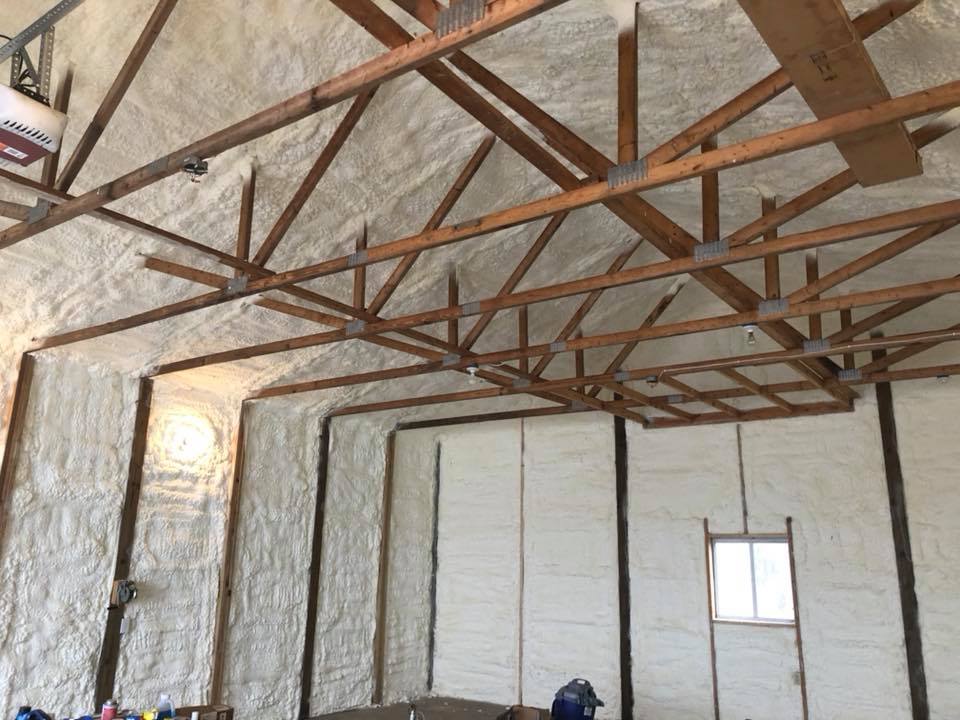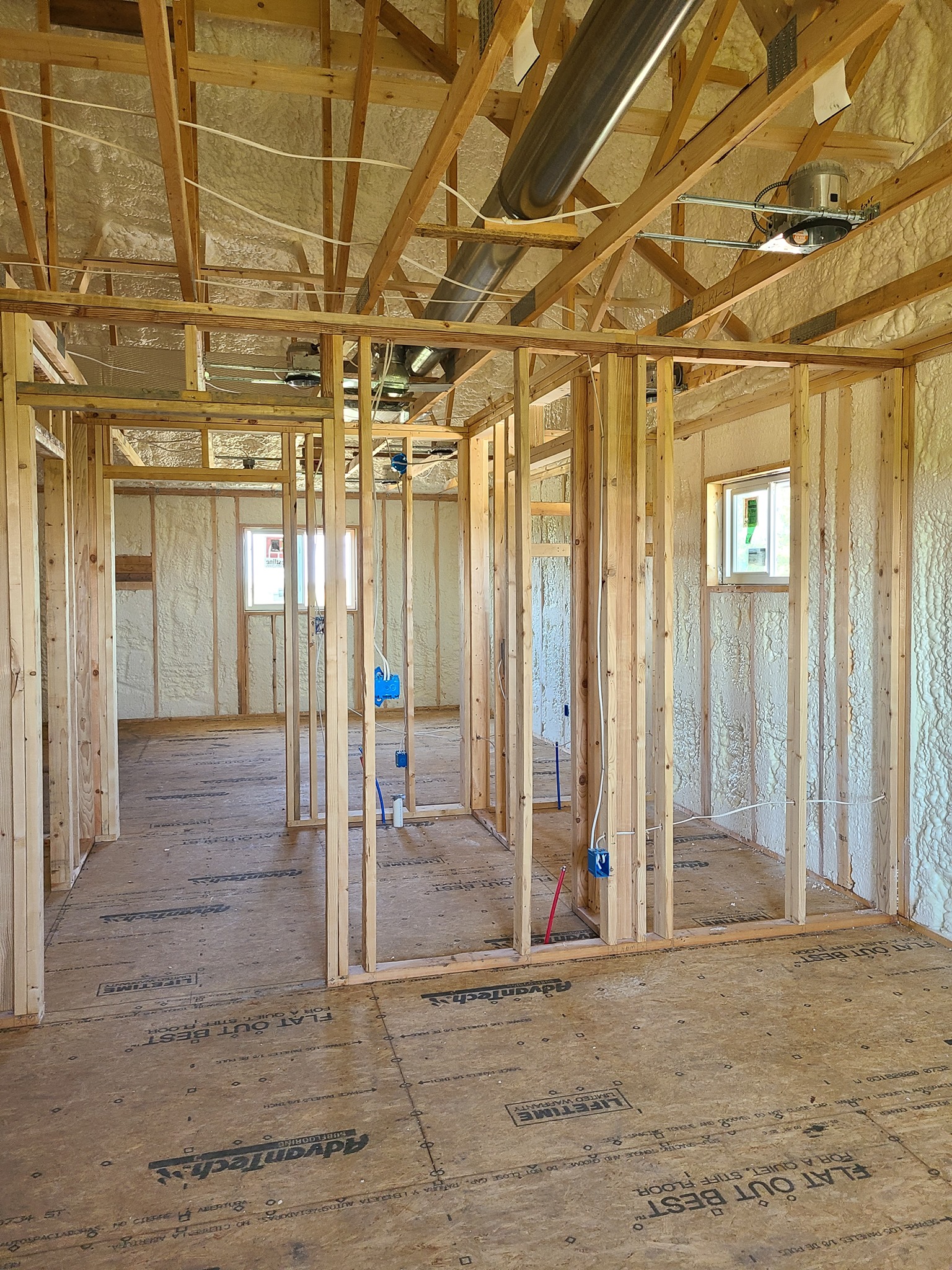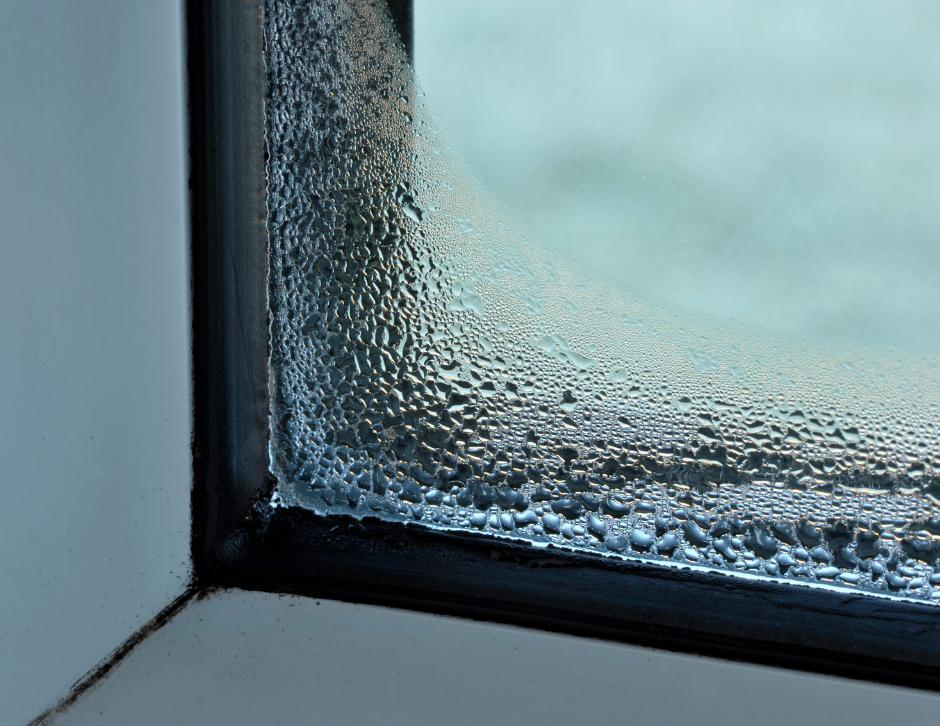by AdvancedSeal
Share
by AdvancedSeal
Share

What “Fireproof” Really Means
Many homeowners assume “fireproof” means a material that cannot burn under any circumstances, but that isn’t accurate. In building science, “fireproof” typically refers to a product’s ability to resist ignition or slow the spread of flames, not complete immunity from fire. Every material has a temperature at which it will break down, including concrete and steel. Spray foam insulation is no different; it’s designed to perform safely within code-defined limits, but it isn’t completely fireproof. Understanding that distinction helps set realistic expectations and highlights why professional installation and protective coatings are essential for safety.
How Spray Foam Reacts to Heat
Spray polyurethane foam (SPF) comes in two main types: open-cell and closed-cell. Both are made from liquid components that expand and cure into a solid, rigid foam that insulates and air-seals a structure. When exposed directly to extreme heat or open flame, SPF will char and eventually ignite, just like most organic materials. However, once cured and protected according to building codes, it becomes part of a tested system designed to slow ignition and limit smoke generation. The key safety step comes after the foam has been applied: adding a thermal or ignition barrier over it.
Why Fire Barriers Are Required
Building codes in Indiana and across North America require that spray foam insulation be separated from living spaces by an approved thermal barrier. In attics or crawl spaces where foam is exposed, a specialized intumescent coating is applied. This coating reacts to heat by expanding and forming a protective layer that insulates the foam underneath from direct flame contact. The most common example is DC315, a water-based coating tested for use over many brands of foam insulation. When applied correctly, it provides the critical window of time firefighters and occupants need in an emergency. Learn more about how it works in this overview of fireproof insulation, which explains the chemistry behind intumescent fire barriers and their role in protecting foam from ignition.
Why Professional Spray Foam Installation Matters
Proper fire protection isn’t just about spraying on a coating; it’s about meeting manufacturer specifications, verifying coverage thickness and ensuring ventilation during curing. Professional, code-compliant contractors measure every layer, document material data and verify adhesion. At Advanced Seal Indiana, our crews apply intumescent coatings as part of every exposed-foam project. This ensures that our applications meet local building and fire safety standards. Homeowners gain not only superior insulation but peace of mind knowing the system has been installed and protected correctly.
Balancing Efficiency and Safety
Spray foam’s energy efficiency and air-sealing ability make it one of the most effective upgrades available. Yet, like any powerful building material, it must be used responsibly. When foam is applied at the right temperature, allowed to cure properly and protected by a tested fire barrier, it becomes a safe and durable part of the home’s structure. The result is insulation that maintains comfort, lowers energy costs and complies fully with fire safety codes.
If you’re planning an insulation upgrade or unsure about an existing installation, we can help. Our certified team inspects and installs code-approved systems that include both the foam and its protective coatings. Schedule your evaluation through our contact page for service in Carmel, Rossville, Westfield and surrounding Indiana communities.
STAY IN THE LOOP
Subscribe to our free newsletter.
Residential buildings—especially those with uneven temperatures, high utility bills or visible drafts—benefit […]
When Indiana homeowners start planning an insulation upgrade, one of […]
Discoloration and Dark Patches Insulation that looks uneven in color […]




